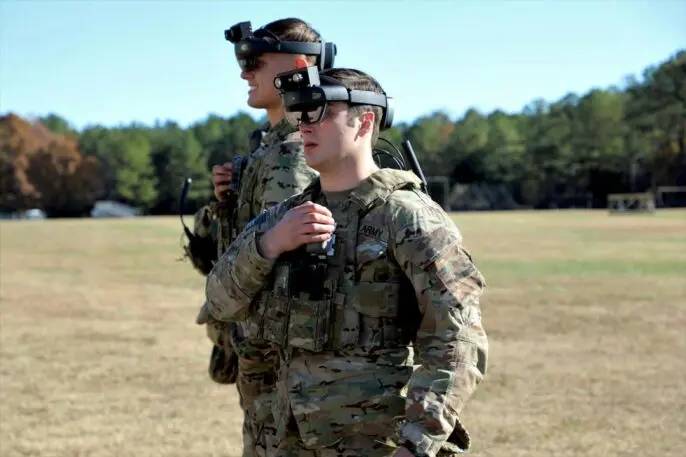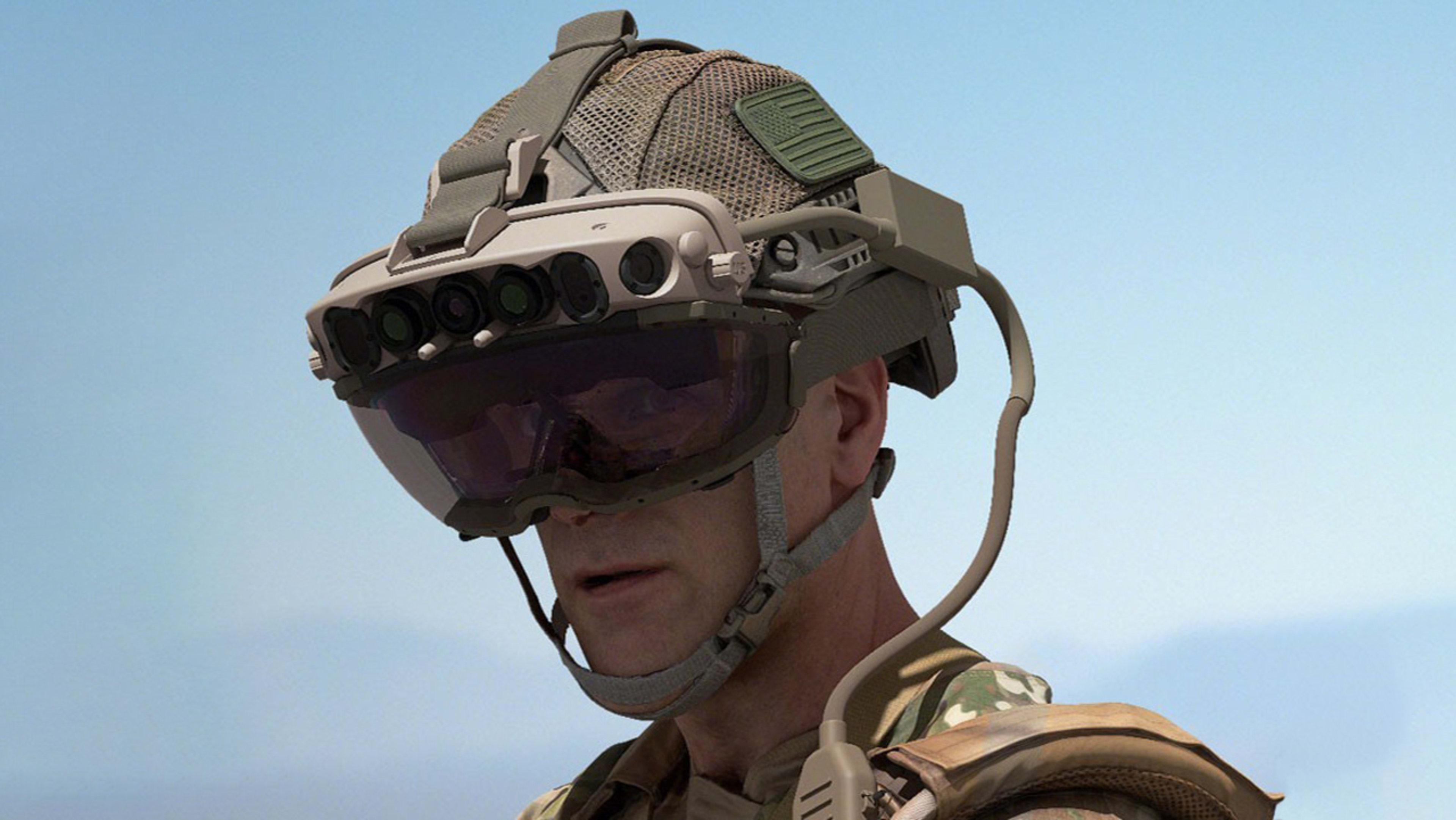At the end of March, Microsoft announced that it had won a huge contract to supply 120,000 of its HoloLens augmented reality headsets to the U.S. Army. But details about how the devices will actually be used have been somewhat scarce. That changed last week, when two of the top three Army leaders took part in a panel discussion on strategic priorities.
Microsoft’s contract extends five years, with an optional additional five years, and could be worth as much as $21.88 billion. The company has been working with teams of soldiers to design and prototype a specialized HoloLens headset since 2018. The modified headset is moving out of the prototype phase now and will go into production and field deployment.
HoloLens is just one part of the larger Integrated Visual Augmentation System (IVAS), which will include support for Microsoft’s Azure cloud platform as well as a series of external sensors that can collect information for the headset. IVAS is said to help soldiers sight and identify enemy combatants, as well as provide night vision and thermal imaging.

Murray said the Army is just in the beginning stages of understanding everything the IVAS system can do for soldiers. One application, he suggests, is putting the sensors—rather than soldiers—in harm’s way. The sensors will act as external eyes, their view accessible through the headset.
“With augmented reality and virtual reality, you can imagine soldiers sitting in back of a combat vehicle and it’s like the armor [protecting soldiers inside the vehicle] is not even there,” Murray said. “It’s just some cameras on the outside of the vehicle to allow that to happen.” Using an accelerometer, the headset might display the world outside the vehicle when a soldier turns their head to look in that direction.
The sensors could be placed in a variety of locations. For example, a soldier might be able to see the view from a sensor mounted on a drone and use it to locate fellow soldiers or enemy combatants.
But it’s clear that the Army is using the IVAS system to showcase something more than just fancy technology. The Pentagon, with all its specialized requirements and red tape, is notoriously slow to take advantage of new technologies, especially those developed in the private sector outside the sphere of major defense contractors such as Boeing and Raytheon. It normally takes defense agencies years to bring new tech to the production stage, and by then it’s often not new anymore.
But Microsoft and the Army say they needed only 28 months to bring IVAS to production and deployment. Acting Secretary of the Army John E. Whitley says the IVAS program was paid for using one of the Pentagon’s “new acquisition authorities,” meaning new procurement protocols that can get money to contractors more quickly.
“IVAS is being done under an OTA (Other Transaction Authority),” Whitley said. “This will be the first major system [of this magnitude] delivered under an OTA this fast to the [Defense] Department.”
Whitley said the IVAS project also exemplifies a new way that the Pentagon is dealing with technology companies. Instead of coming to potential contractors with a long list of heavily specialized requirements, the Army came to Microsoft with a problem and asked the company to devise a solution.
Recognize your brand’s excellence by applying to this year’s Brands That Matter Awards before the early-rate deadline, May 3.
